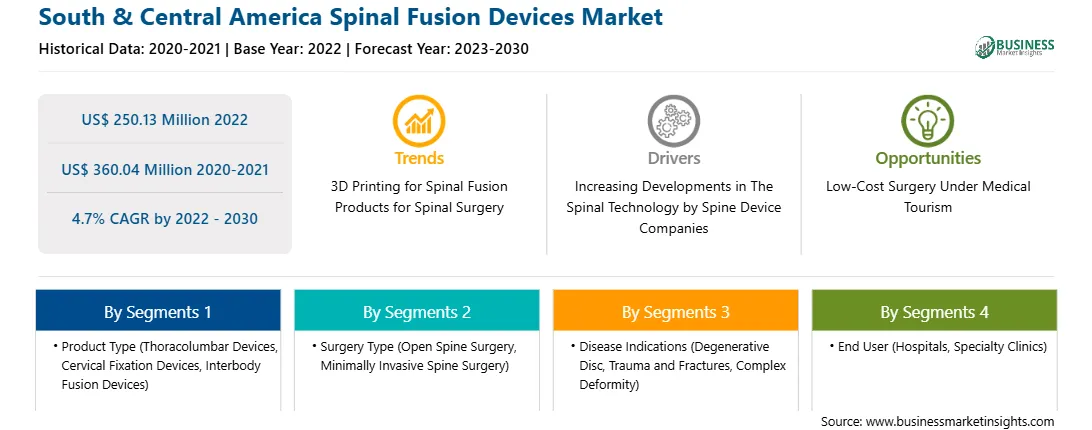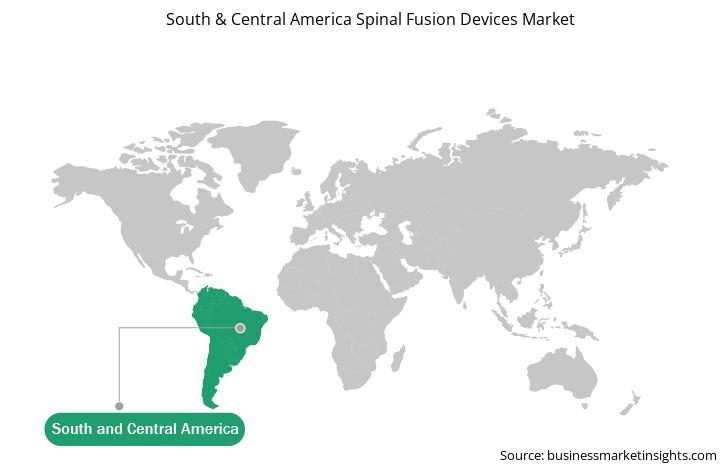In recent years, there has been a rise in spinal fusion procedures worldwide due to growing innovations in surgical approaches. Technological developments have offered a wide variety of interbody devices. The newly introduced spinal fusion devices are now used as alternatives in bone grafting materials, increasing the number of spine fusion procedures. The advancements in spinal fusion techniques have allowed the use of pedicle screws for posterior instrumentation, which has leveraged market growth. Similarly, the introduction of spinal fusion methods, with interbody fusion with stand-alone cages and with anterior, lateral, or posterior approaches, designed for different surgical indications and surgeon preferences, and patient conditions have significantly increased the number of spinal fusion procedures.
The aging demographic, coupled with lifestyle-related factors has led to a substantial increase in individuals experiencing spinal issues such as degenerative disc disease and spinal deformities. The demographic shift has created a growing pool of patients seeking effective interventions, with spinal fusion procedures emerging as a prominent solution. Thus, considering the projection for spinal fusion procedures, the market is likely to accelerate significantly during the forecast period and will have substantial market growth beyond the forecast period.
Brazil is rapidly developing its healthcare system and has the presence of well-established players. According to the World Health Organization (WHO), Brazil has an advanced healthcare system in South & Central America that is likely to offer significant growth opportunities for the market. Additionally, the country has the 11th largest elderly population in the world. As per Brazil's Ministry of Health, by 2030, Brazil is anticipated to rank fifth in geriatric population worldwide. The WHO estimated that the elderly population will have increased by more than 300%, and the overall population will grow by 30% by 2050 in the country. According to the Pan American Health Organization (PAHO), in 2022, Brazil had more than 30 million people aged above 60, which represents 30% of the total population. The number of people aged above 60 is expected to reach ~50 million, which is likely to represent 24% of the total population of Brazil by 2050. According to the International Olympiad Foundation (IOF), the lifetime prevalence of fractures is 37.5% among men and 21% among women. The geriatric population is at a greater risk of fractures due to low bone density, which is expected to boost the demand for spinal fusion devices.
The South & Central America spinal fusion devices market is segmented based on product type, surgery type, disease indications, end user, and country.
Based on product type, the South & Central America spinal fusion devices market is segmented into thoracolumbar devices, cervical fixation devices, and interbody fusion devices. The thoracolumbar devices segment held the largest share in 2022.
By surgery type, the South & Central America spinal fusion devices market is bifurcated into open spine surgery and minimally invasive spine surgery. The open spine surgery segment held the largest share in 2022.
By disease indications, the South & Central America spinal fusion devices market is segmented into degenerative disc, trauma and fractures, complex deformity, and others. The degenerative disc segment held the largest share in 2022.
In terms of end users, the South & Central America spinal fusion devices market is categorized into hospitals, specialty clinics, and others. The hospitals segment held the largest share in 2022.
Based on country, the South & Central America spinal fusion devices market is segmented into Brazil, Argentina, and the Rest of South & Central America. Brazil dominated the South & Central America spinal fusion devices market in 2022.
B. Braun SE, DePuy Synthes Inc, Globus Medical Inc, Medtronic Plc, NuVasive Inc, Stryker Corp, and ZimVie Inc are some of the leading companies operating in the South & Central America spinal fusion devices market.
Strategic insights for the South & Central America Spinal Fusion Devices provides data-driven analysis of the industry landscape, including current trends, key players, and regional nuances. These insights offer actionable recommendations, enabling readers to differentiate themselves from competitors by identifying untapped segments or developing unique value propositions. Leveraging data analytics, these insights help industry players anticipate the market shifts, whether investors, manufacturers, or other stakeholders. A future-oriented perspective is essential, helping stakeholders anticipate market shifts and position themselves for long-term success in this dynamic region. Ultimately, effective strategic insights empower readers to make informed decisions that drive profitability and achieve their business objectives within the market.

| Report Attribute | Details |
|---|---|
| Market size in 2022 | US$ 250.13 Million |
| Market Size by 2030 | US$ 360.04 Million |
| Global CAGR (2022 - 2030) | 4.7% |
| Historical Data | 2020-2021 |
| Forecast period | 2023-2030 |
| Segments Covered |
By Product Type
|
| Regions and Countries Covered | South and Central America
|
| Market leaders and key company profiles |
The geographic scope of the South & Central America Spinal Fusion Devices refers to the specific areas in which a business operates and competes. Understanding local distinctions, such as diverse consumer preferences (e.g., demand for specific plug types or battery backup durations), varying economic conditions, and regulatory environments, is crucial for tailoring strategies to specific markets. Businesses can expand their reach by identifying underserved areas or adapting their offerings to meet local demands. A clear market focus allows for more effective resource allocation, targeted marketing campaigns, and better positioning against local competitors, ultimately driving growth in those targeted areas.

The South & Central America Spinal Fusion Devices Market is valued at US$ 250.13 Million in 2022, it is projected to reach US$ 360.04 Million by 2030.
As per our report South & Central America Spinal Fusion Devices Market, the market size is valued at US$ 250.13 Million in 2022, projecting it to reach US$ 360.04 Million by 2030. This translates to a CAGR of approximately 4.7% during the forecast period.
The South & Central America Spinal Fusion Devices Market report typically cover these key segments-
The historic period, base year, and forecast period can vary slightly depending on the specific market research report. However, for the South & Central America Spinal Fusion Devices Market report:
The South & Central America Spinal Fusion Devices Market is populated by several key players, each contributing to its growth and innovation. Some of the major players include:
The South & Central America Spinal Fusion Devices Market report is valuable for diverse stakeholders, including:
Essentially, anyone involved in or considering involvement in the South & Central America Spinal Fusion Devices Market value chain can benefit from the information contained in a comprehensive market report.